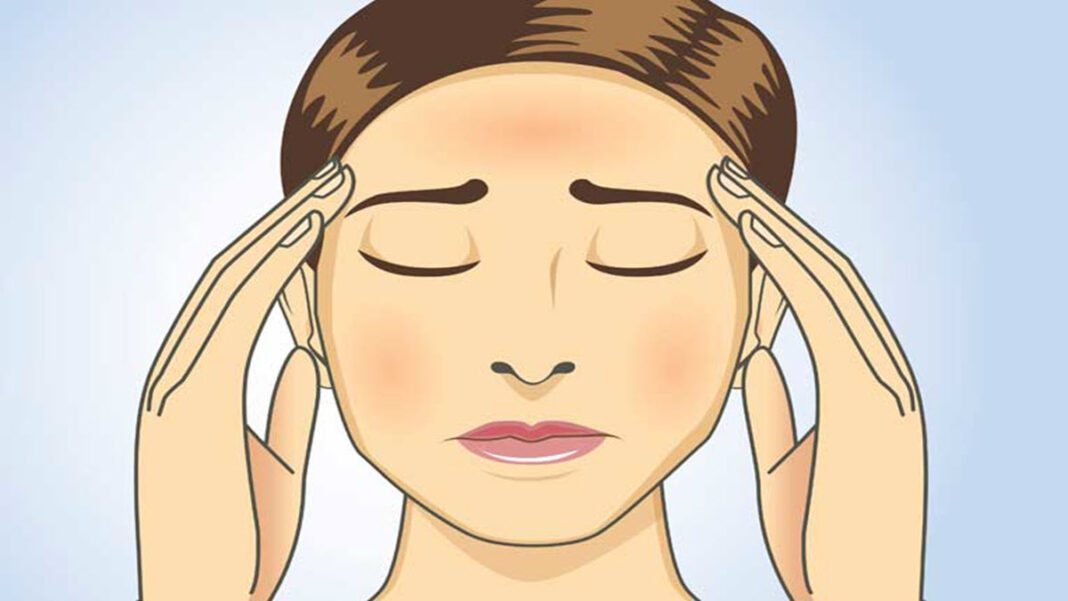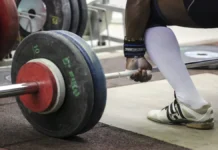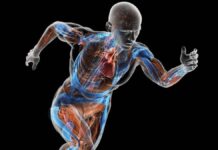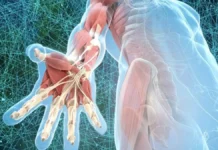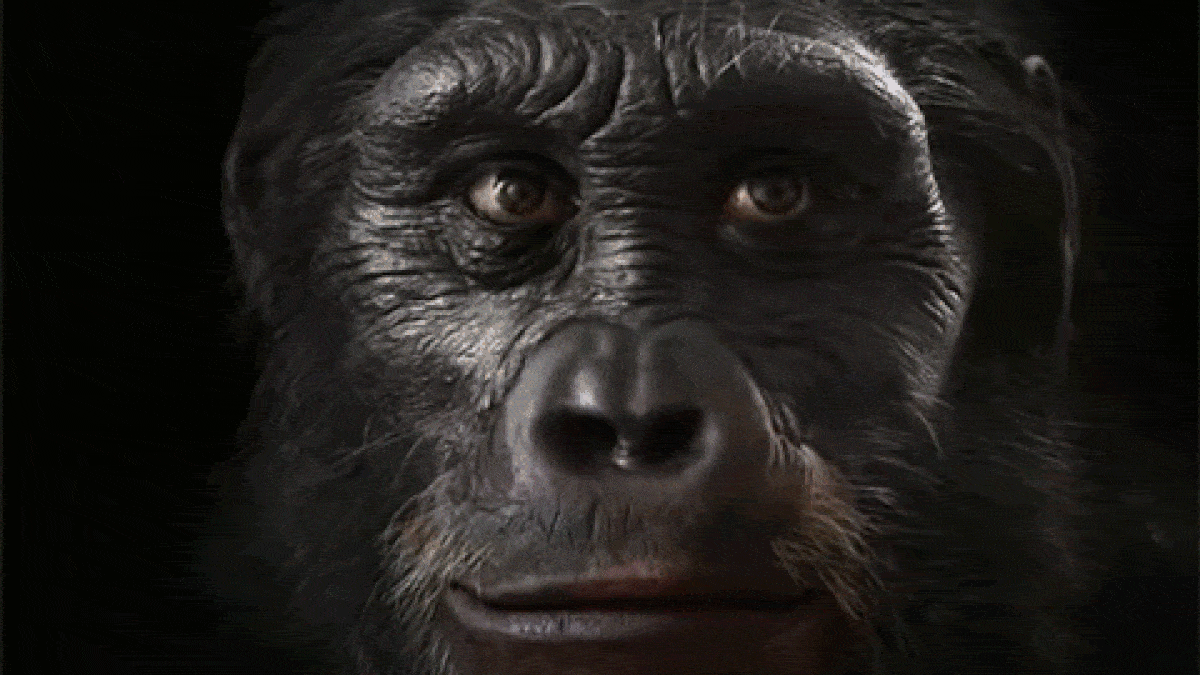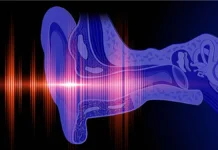Headaches are one of the most common disorders of the nervous system. It is estimated that almost half of the adult population has had a headache at least once in the past year.
The evolution of headache treatments through the ages: From trepanation to the era of pharmacology
Prehistory (Before 4000 BC) – Mystical beliefs and trepanation
Around 6,000 years ago, a fascinating belief persisted in various cultures that headaches were attributed to the presence of a spirit lodged in the skull. To exorcise this painful spirit, a daring and mysterious medical practice was adopted: trepanation. This procedure involved creating a deliberate hole in the skull to release the spirit responsible for the suffering.
Trepanation, practiced throughout various ancient civilizations, was a medical procedure that defies our modern understanding. Practitioners of the time used a specific instrument called a trephine to delicately perforate the patient’s skull. This method was used not only to treat headaches, but also for various cerebral and psychological conditions, according to the beliefs of the time.
The idea behind trepanation was that creating an orifice in the skull would allow the malevolent spirit, causing the headaches, to escape, thereby relieving the patient’s pain. It was a medical approach imbued with mysticism, where the boundary between the spiritual and the physical blurred. Practitioners of trepanation believed in the existence of invisible forces influencing human health, and creating a hole in the skull was seen as a radical solution to restore balance.
This procedure was not without its dangers, and yet it was practiced with some regularity in various ancient societies. The instruments used were often rudimentary, and practitioners had to demonstrate great precision to avoid serious complications. Despite the high risks, trepanation is a testament to humanity’s relentless quest to understand and treat physical pain, even at a time when medicine was still shrouded in mystery.
The use of trepanation to treat headaches offers a fascinating look at the evolution of medical practices through the ages. While the method may seem archaic and confusing today, it reflects the complexity of ancient cultural beliefs and medical approaches. It also testifies to human resilience in the face of pain and the desire to seek solutions, even through methods that seem strange in the light of our contemporary knowledge.
In conclusion, trepanation to treat headaches 6,000 years ago represents a fascinating era in medical history. This practice, imbued with mysticism and spiritual beliefs, illustrates the diversity of ancient medical approaches and highlights humanity’s constant quest to understand and relieve pain. Although trepanation may seem strange in our modern context, it remains an intriguing testament to human ingenuity and perseverance throughout the ages.

Hippocrates (470-410 BC) – The theory of vapors
Hippocrates, often referred to as the father of medicine, left a profound legacy in the understanding of headaches, particularly migraine. Born between 470 and 410 BC. B.C., his valuable observations laid the foundation for the ancient understanding of this debilitating condition.

Hippocrates introduced the notion of “Magrim” and established a link between headaches and vapors rising from the stomach to the head. His innovative vision paved the way for an early understanding of the mechanisms underlying headaches, laying the foundation for future research in the field of headache.
Migraine, according to Hippocrates, was manifested by the appearance of a bright light, mainly in the right eye. This luminous aura was often followed by violent pain that originated in the temples and finally radiated throughout the head and neck region. His detailed descriptions of this sequence of symptoms constitute a first attempt to categorize the different manifestations of migraine.
Hippocrates believed that several triggers could cause migraines. He identified exercise and sexual intercourse as potential triggers for this painful condition. His observations on the external triggers of migraine laid the foundation for future research aimed at better understanding the triggers of this condition.
One of Hippocrates’ most distinctive theories regarding migraine was related to the notion of vapors. He believed that migraines resulted from ascending vapors, moving from the stomach to the head. This theory reflected the ancient understanding of the circulation of fluids in the body and illustrated Hippocrates’ attempt to find a physiological explanation for migraine.
In his quest to relieve the intense pain associated with migraine, Hippocrates proposed the idea that vomiting could partially relieve suffering. This approach, although ancient in its execution, reflected an early attempt to treat migraine by venting the purported vapors responsible for the condition. Although methods have evolved since then, the idea of relieving migraine through physical means has endured through the centuries.
Hippocrates’ legacy in understanding migraine is indisputable. His observations, although based on a limited understanding of anatomy and physiology, laid the foundation for future generations of physicians and researchers. Hippocrates’ innovative ideas helped shape the perception of migraine for centuries, and his influence persists in modern understanding of this complex condition. His visionary vision paved the way for continued exploration of headache, leaving an indelible mark on the history of medicine.
Antiquity – Greek and Roman medicine
Throughout the annals of antiquity, Greek and Roman medicine played a crucial role in forming the basis of medical understanding, including that of headaches. This era was marked by a unique confluence of existing beliefs, merging physical and spiritual elements in an attempt to demystify the mysteries of head pain.
Ancient medicine, heavily influenced by the teachings of Hippocrates and Galen, consolidated existing beliefs about the nature of headaches. These ancient physicians incorporated a subtle combination of physical and spiritual aspects into their theories, seeking to elucidate the root causes of this debilitating condition.
From this perspective, migraine, for example, has been interpreted as resulting from physiological imbalances, notably the famous “vapors” of Hippocrates. According to this theory, migraines were attributed to ascending vapors traveling from the stomach to the head. This physical explanation, although rudimentary compared to our modern knowledge, was an innovative attempt to associate observable phenomena with the invisible nature of headaches.
At the same time, the spiritual dimension was also integrated into ancient medicine. Headaches were often considered manifestations of imbalances in bodily humors, an idea that had roots in the thought of Hippocrates. These imbalances were often linked to spiritual factors, such as anger, sadness, or other emotional states considered disruptive to overall well-being.
Greek and Roman medicine paid particular attention to treatments aimed at restoring physical and spiritual balance. Practices such as bloodletting, aimed at purifying the blood, were commonly employed to restore physiological harmony. Additionally, spiritual rituals, including offerings and prayers, were often recommended to appease invisible forces thought to be associated with headaches.
The legacy of ancient medicine in understanding headache persists, to some extent, in our contemporary understanding. Although physical theories have evolved over the centuries, the importance of considering the spiritual dimension in the context of headaches has left a lasting imprint.
Middle Ages – Influence of moods
During the Middle Ages, spanning from the 5th to the 15th century, the understanding of headaches was deeply rooted in the theory of humors, a medical concept inherited from ancient Greek medicine. According to this theory, the balance of the four bodily humors – blood, yellow bile, black bile and phlegm – influenced health and disease. Headaches were seen as the result of an imbalance in these humors, leading to treatment approaches that are today considered archaic.
The theory of humors postulated that health depended on the harmonious balance between these humors. Thus, headaches were attributed to an excess or deficit of certain humors, and medieval practitioners recommended interventions aimed at restoring this delicate balance.
Bloodletting, a common practice at the time, was used to remove excess blood, considered a potential cause of headaches. Bloodletting was performed using instruments such as lancets to remove a specific amount of blood from the patient. This method was based on the belief that removing blood would help restore balance to the humors and relieve headaches.
Similarly, purging was another common method used to treat headaches in the Middle Ages. It consisted of the administration of laxative or emetic substances to expel the humors considered responsible for the disorders. Purgatives were often herbal, but their effectiveness was questionable and their side effects sometimes serious.
Treatments based on the theory of humors were influenced by the thinking of physicians such as Galen, a Greek physician whose work continued to have considerable influence in the Middle Ages. Medieval practitioners frequently referred to the writings of Galen to develop their diagnoses and prescriptions.
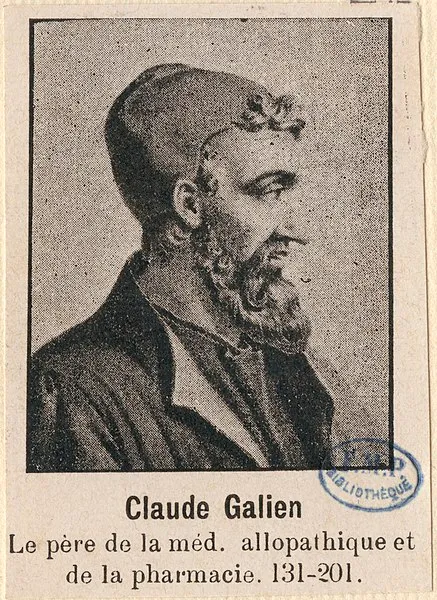
However, despite the deep roots of humor theory in medieval medicine, it is important to note that treatment approaches varied between regions and schools of medical thought. Some practitioners could adopt less invasive treatments, such as dietary changes, medicinal herbs, or incantations.
The influence of moods on the understanding of headache has persisted for centuries, demonstrating the resilience of established medical paradigms. However, with the advancement of medicine and the emergence of new ideas over time, the foundations of mood theory have been questioned, paving the way for more evidence-based approaches.
In retrospect, although medieval treatment methods based on the theory of humors may seem primitive, they reflect the era’s efforts to explain and treat headaches. These practices, although outdated, demonstrate the perseverance of ancient societies in the search for solutions to health problems, even if their theoretical foundations turned out to be outdated medical paradigms.
Renaissance – Anatomical advances
The Renaissance period, from the 14th to the 17th century, marked an era of intellectual, artistic and scientific renewal in Europe. Among the areas that have seen notable advances, anatomy has emerged as a crucial field of study, making significant contributions to the medical understanding of headache.
During this period, pioneers such as Andreas Vesalius questioned ancient dogmas and undertook human dissections to study anatomy more precisely. Vesalius, for example, published his major work, “De Humani Corporis Fabrica” (On the Structure of the Human Body), in 1543, which revolutionized anatomical knowledge of the time.
Anatomical advances during the Renaissance allowed for a deeper understanding of the structure of the skull, brain, and blood vessels, laying the foundation for more accurate analysis of headaches. Before this time, anatomical knowledge was often based on theoretical descriptions rather than direct observations, which limited understanding of the mechanisms underlying conditions such as headaches.
Anatomical dissections have provided insight into the complexity of the intracranial vascular system, paving the way for more substantiated theories about the possible causes of headaches. Understanding the relationships between blood vessels, the brain, and other cranial structures has laid the foundation for the exploration of neurological disorders, including those related to headache.
Another notable contributor from this period was Ambroise Paré, a French Renaissance surgeon, who made significant improvements in surgical techniques. Paré developed safer methods for treating head injuries, paving the way for more sophisticated interventions for headaches caused by physical trauma.
The influence of Renaissance anatomical advances on the understanding of headaches has been lasting. These discoveries laid the foundations for a more scientific and precise approach to head conditions, gradually moving medicine away from philosophical speculations towards concrete observations and experiments.
17th-18th centuries – Development of neurological theories
Thomas Willis, often hailed as the father of neurology, left an indelible mark on the history of medicine by establishing crucial foundations for the understanding of headaches, particularly those related to what he called “Magrim.” . Born in 1621, Willis not only laid the foundations of neurology as a distinct discipline, but was also the first to formulate a revolutionary hypothesis about the origin of headache.

In his pioneering work, Willis postulated that “Magrim”, the term used at the time to describe headaches, was the result of blood stagnating in the dural vessels, distending them and thus causing the characteristic painful sensation. This pioneering theory marked a turning point in the understanding of headaches and laid the foundation for future research in the field of neurology.
Willis’s insightful observation of the link between blood stasis in dural vessels and headache paved the way for a deeper understanding of the mechanisms underlying this condition. His visionary work laid the foundation for future medical advances in the field of headache and contributed significantly to the evolution of neurology as a scientific discipline.
The implications of Willis’ Magrim theory have had a lasting impact on the way doctors approach and treat headaches. By recognizing the crucial role of dural vessels and blood stagnation, Willis paved the way for innovative therapeutic approaches to relieve headache symptoms.
Thomas Willis’ contribution to neurology is not limited to his work on headaches. As a pioneer in the study of the nervous system, he also laid the foundation for the modern understanding of many other neurological conditions. His influence persists in medical classrooms and neurology practices around the world, underscoring the enduring importance of his revolutionary ideas.
19th century – Advances in migraine treatment
Sir William Osler, Professor Emeritus of Medicine at Johns Hopkins University, left an indelible mark on the medical field by introducing the innovative concept of tension headache. It was during the first edition of his work entitled “The Principles and Practice of Medicine” in 1892 that this brilliant medical mind addressed this hitherto little-known condition.
Osler defined what we recognize today as “tension-type headache” by attributing its origins to muscular rheumatism of the scalp and neck. He characterized these particular headaches as “Induration Headaches”. He was the first to put forward the idea of the existence of “muscle contraction headaches”, thus laying the foundation for future research and medical advances in this area.
This groundbreaking discovery by Sir William Osler has had significant implications in the field of treatment of migraine, a debilitating condition marked by severe throbbing headaches, often accompanied by nausea, vomiting and sensitivity to light. Ergotamine, a compound specifically identified by Osler, has been shown to be a key component in the effective management of these symptoms.
The introduction of ergotamine marked a turning point in the understanding and treatment of migraines. This discovery has paved the way for new therapeutic strategies, offering migraine patients a glimmer of hope that their symptoms can be managed more effectively.
Thus, thanks to the visionary mind of Sir William Osler, the field of neurology has seen substantial progress in the understanding and treatment of tension headaches and migraine. His exceptional contribution continues to influence modern medical practice, highlighting the critical importance of research and innovation in continually improving health care.
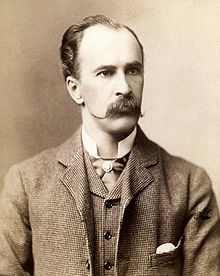
20th century – Isolation of ergotamine by Arthur Stoll
In 1918, a major event in the field of pharmacology marked the history of the fight against migraine. Arthur Stoll, a promising chemist then based in Basel, Switzerland, announced the success of his isolation of the first pure crystalline substance obtained from ergot, known as ergotamine. This significant advance has laid the foundation for considerable progress in the understanding and treatment of headaches, particularly migraine.
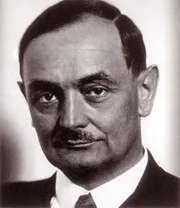
Arthur Stoll, born in 1887, demonstrated an early passion for chemistry, and his work quickly attracted attention in the medical field. His isolation of ergotamine represented a watershed moment in research into natural substances. Ergot, a parasitic fungus of rye, has long been associated with potentially beneficial and detrimental effects on human health. Stoll successfully extracted and purified ergotamine, allowing its properties to be studied more thoroughly.
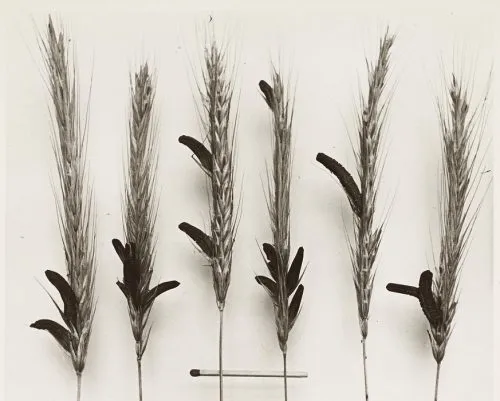
In 1917, a year before his announcement of the isolation of ergotamine, Arthur Stoll founded the specialty pharmaceutical department of Sandoz. This initiative helped establish an environment conducive to the research and development of new drugs. The Sandoz “Department of Specialty Pharmaceuticals” quickly gained a reputation for excellence in the field, engaging in the research of innovative compounds to treat various conditions.

Arthur Stoll’s contribution to the understanding of ergot and the advancement of migraine treatments has had a lasting impact on medical practice. The use of ergotamine in the treatment of migraine headaches has become widespread, providing significant relief to many people suffering from this debilitating condition.
Beyond his specific discoveries, Arthur Stoll’s work laid the foundations for the continued exploration of the properties of natural substances in the pharmaceutical field. His legacy has lived on through Sandoz’s Specialty Pharmaceuticals department, which has continued to play a key role in pharmaceutical innovation over the decades.
In conclusion, Arthur Stoll’s groundbreaking work in 1918 represented a crucial step in the treatment of migraine, introducing ergotamine as an effective weapon against this painful condition. His contribution to the understanding of ergot paved the way for later advances in the treatment of headaches, leaving a lasting legacy in the field of pharmacology and medicine.
Traditional non-Western medicine
Eastern approaches to treating headaches are diverse and draw on traditional medical systems rich in history and philosophy. Here is an overview of some of these approaches in Chinese medicine, Indian Ayurvedic medicine, and some African practices.
Chinese Medicine
Chinese medicine, with its philosophical underpinnings such as Qi (vital energy), Yin and Yang, approaches headaches as an energetic imbalance. Acupuncture, an age-old practice, involves inserting fine needles into specific points on the body to restore energy balance. According to Chinese theory, headaches can result from stagnation or disruption in the flow of Qi, and acupuncture aims to restore this harmonious circulation.
Chinese herbal medicine, using medicinal herbs, is another common approach. Specific herbal blends are prescribed based on each individual’s energy diagnosis, aimed at restoring internal balance and relieving headaches.
The practice of Tai Chi, which combines flowing movements, breathing and meditation, is also used to improve energy balance and reduce stress, a factor often associated with headaches.
Indian Ayurvedic Medicine
In Ayurvedic medicine, headaches are often interpreted as an imbalance of the doshas – Vata, Pitta, and Kapha. Ayurvedic treatments include dietary changes based on the dominant dosha, use of specific herbs, meditation, yoga and breathing practices to restore inner harmony.
Ayurvedic massages, such as Shirodhara (continuous flow of oil on the forehead) or Champissage (head and neck massage), are often recommended to soothe the nervous system and relieve headaches.
Meditation, especially breathing meditation (Pranayama), is also incorporated to calm the mind and reduce tension, thereby helping in headache management.
African Approaches
Approaches vary considerably across Africa due to cultural diversity and traditional practices specific to each region. Some communities use medicinal herbs, while others turn to spiritual rituals to treat headaches.
Massages, sometimes performed with specific oils or herbal preparations, can be used to relax neck muscles and relieve tension that causes headaches.
In some African cultures, traditional healers play a key role in using knowledge passed down through generations to treat various conditions, including headaches, through practices blending medicine and spirituality.
By exploring these different oriental medical traditions, we discover the richness of holistic approaches which consider the body, mind and vital energy as interconnected. These practices offer a complementary perspective to Western medicine in the understanding and treatment of headaches.
Evolution of modern medicines
1. Painkillers: Painkillers are the first line of defense against mild to moderate headaches. Medications such as acetaminophen (paracetamol) and ibuprofen have been mainstays in rapid pain management. They often work by blocking pain signals and reducing inflammation, making them popular options for many types of headaches.
2. Anti-inflammatories: Headaches associated with inflammation may benefit from nonsteroidal anti-inflammatory drugs (NSAIDs) such as naproxen. These medications work by reducing inflammation and relieving associated pain. Their more targeted mechanism of action may be particularly effective in cases of headaches linked to inflammatory factors.
3. Triptans: Triptans represent a significant advance in the treatment of migraines. These medications, including sumatriptan, are specially designed to target the specific mechanisms of migraines. They work by reducing the dilation of blood vessels in the brain and reducing pain. Triptans have significantly improved the quality of life of people suffering from frequent migraines.
4. Prophylaxis: Apart from acute treatments, prophylactic medications may be prescribed to prevent chronic headaches. This may include beta blockers, antidepressants, or even muscle relaxation-based treatments. The prophylactic approach aims to reduce the frequency and intensity of headaches in the long term.
Classification of headaches
Headache classification represents a crucial aspect of medicine, a complex field that focuses on categorizing various types of headache pain based on their distinctive characteristics, underlying causes, and associated symptoms. This classification approach is essential for health professionals, in particular neurologists and pain medicine specialists, in order to promote better understanding, precise diagnosis, and effective treatment of patients suffering from headaches. . The constant evolution of classification criteria reflects advances in medical research and the growth in our understanding of the mechanisms underlying these conditions.
The International Headache Society (IHS) played a central role in establishing a universally accepted and widely used medical classification known as the International Classification of Headache Disorders (ICHD). This classification, developed and regularly updated by international experts, offers an organized and detailed structure for categorizing headaches into different entities. The main categories include primary headaches, secondary headaches, and “other” headaches. This hierarchical structure allows a systematic and differentiated approach in the identification and understanding of the various types of headaches.
Primary headaches
- Migraines: Migraines are characterized by attacks of severe, throbbing headaches, often accompanied by symptoms such as nausea, vomiting, sensitivity to light and sound. Some individuals may also experience visual auras before the onset of the migraine.
- Tension headaches: These headaches are usually described as a feeling of tightness or pressure around the head. They are often linked to stress, muscle tension or fatigue.
- Cluster headaches: Also called Horton’s headaches, they are characterized by intense, localized pain around one eye, accompanied by symptoms such as watery eyes, nasal congestion and restlessness.
Secondary headaches
- Headaches associated with medical conditions: Headaches can result from underlying medical conditions such as infections, vascular disorders, head trauma, sinusitis, dental problems or neurological disorders.
- Substance use headaches: Certain medications, excessive alcohol consumption, caffeine, or withdrawal from certain substances can trigger headaches.
- Cervicogenic headaches: These headaches result from problems in the cervical region, such as muscle tension or joint problems.
Other types of headaches
List
- Rebound headaches: They occur due to overuse of pain medications. Excessive use of certain pain relievers can lead to recurring headaches.
- Exertional headaches: These headaches occur during or after strenuous physical exertion and may be associated with activities such as weight training or frequent coughing.
- Chronic paroxysmal hemicrania (CPH): This rare type of cluster headache is characterized by recurring attacks of intense pain, often localized to one side of the head, but which may change sides over time.
- Hypnic headache: Also known as “sleep headache,” it manifests as brief but very painful headaches that occur exclusively during sleep, usually at the same time each night.
- Cough headaches: These headaches are triggered by coughing and may be associated with conditions such as chronic bronchitis or other breathing problems.
- Food headaches: Certain foods, such as chocolate, aged cheese, citrus fruits, can trigger headaches in some people, especially those with migraines.
- Pregnancy Headaches: Some pregnant women may experience headaches related to hormonal changes during pregnancy.
- Headaches associated with sexual activities: Some people may experience headaches during sex, called “sexual headaches.”
- Post-traumatic headaches: Following head trauma, headaches can develop, sometimes persistently.
- Headaches Related to Cold Exposure: In some people, exposure to cold can trigger headaches, known as “cold headache
- Nummular headache (or plaque headache): This headache is characterized by localized, coin-shaped pain on the scalp, often persistent and chronic in nature.
- Explosive headache: These headaches come on suddenly with extremely intense pain that peaks within seconds. They can be brief but very painful.
- Drug-induced headache: Resulting from the abuse or overuse of pain medications, this headache often occurs when the effect of the medication wears off.
- Exercise-induced headaches: Some individuals may experience headaches during or after exercise, especially if the physical activity is strenuous.
- Thunderclap headache: Also known as thunderclap headache, it is characterized by sudden, intense pain, reaching its peak intensity within seconds to minutes.
- Screen headache: Linked to prolonged exposure to computer, television or smartphone screens, this headache can be associated with visual fatigue.
- Oculogyric headache: This type of headache is related to involuntary and repetitive eye movements, often seen in people with certain neurological conditions.
- Hypotensive headache: Occurring after a sudden change in position, such as standing up quickly, this headache is associated with a sudden drop in blood pressure.
- Post-coital headache: Some people may experience headaches after sexual activity, also known as secondary sexual headache.
- Persistent hemipheral headache: A persistent pain on one side of the head that can last for days or even months.
- Postlumbar headache: Occurring after a lumbar puncture, this headache is often associated with cerebrospinal fluid leaks.
- Orgasm Headache: Some individuals may experience sudden, intense headaches during or after orgasm.
- Dry cough headache: Triggered specifically by a persistent dry cough, this headache may be associated with respiratory tract irritation.
- Digital headache: Resulting from prolonged use of digital devices, such as smartphones or tablets.
- Hunger headache: Some people may experience headaches when they are hungry, often better after eating.
- Ice reflex headache: Triggered by rapidly consuming frozen foods, this headache is sometimes called “ice brain.”
- Valsalva headache: Occurring during exertions such as defecation, vomiting or coughing, this headache is linked to sudden changes in intracranial pressure.
- Vestibular headache: Associated with balance problems and dizziness, this headache can result from problems in the inner ear.
- Electrical storm headache: A rare form of headache characterized by recurrent episodes of intense pain, sometimes triggered by visual stimuli.
- Hypnosis headache: Some individuals may experience headaches after a hypnosis session, although this is rare.
- Headache due to hyperventilation: Rapid, shallow breathing can cause headaches in some people.
- Hairdresser’s headache: Associated with tension in the scalp region, it can be triggered by tight hairstyles.
- Headache associated with maxillofacial surgery: After certain surgical procedures on the face and jaw, headaches may occur.
- Headache due to chemical exposure: Certain chemicals or solvents can trigger headaches in sensitive people.
- Nosebleed headache (cephalalgic rhinorrhea): A headache that occurs in association with a nasal discharge of cerebrospinal fluid after head trauma.
- Yeast headache: Some people may experience headaches related to consuming yeast in food or drinks.
- Altitude headache: Usually occurring at high altitudes, this headache may be associated with acute mountain sickness.
- Waking-up coffee headache: Occurring after waking up after drinking coffee, it is often linked to caffeine dependence.
- Post-lumbar puncture headache: A headache that can occur after a lumbar puncture and is often related to loss of spinal fluid.
- Sneezing headache: Some people may experience headaches from frequent sneezing, a phenomenon sometimes called a “sneezing headache.”
- Prolonged speech headache: Associated with prolonged periods of speaking, especially during speeches or presentations.
- Exertion Headache: Some individuals may experience headaches after strenuous exercise.
- Prolonged reading headache: Headaches can occur after prolonged reading, sometimes called “reading headache.”
- Headache related to hormonal fluctuations: Some women may experience headaches related to hormonal changes, such as those occurring during the menstrual cycle.
- Dehydration headache: Insufficient hydration can sometimes lead to headaches, especially in some people sensitive to dehydration.
- Headache due to changes in weather: Some individuals report headaches related to variations in air pressure and climate changes.
- Fluorescent Lighting Headache: Certain environments lit by fluorescent lights can trigger headaches in some people.
- Junk Food Headache: A diet high in fat, sugar, and food additives can sometimes be associated with headaches.
- Post-covid headache: Some people who have recovered from COVID-19 report persistent headaches as one of the post-infection symptoms.
- chronically with prolonged periods of frequent attacks.
- Ice headache: Some individuals may experience headaches after quickly consuming iced foods or drinks.
- Air pressure headache: Sudden changes in air pressure, such as during airplane travel, can trigger headaches in some people.
- Headache due to male hormonal changes: Some men may experience headaches related to hormonal changes, although this is less common than in women.
- Runner’s headache: Some runners report headaches after prolonged running, sometimes called “runner’s headache.”
- Headache associated with uncorrected vision problems: Uncorrected vision problems can sometimes lead to headaches, especially after prolonged reading or use of screens.
- Headache from eating cheese: Certain types of cheese, due to their tyramine content, can trigger headaches in some sensitive people.
- Headache in relation to prolonged artistic activities: Headaches may occur after prolonged periods of artistic activities, such as painting or drawing.
- Headache from alcohol consumption: Some individuals may experience headaches after alcohol consumption, especially in cases of abuse or individual sensitivity.
- Chronic Sinusitis Headache: Inflammation of the sinuses can lead to headaches, especially around the forehead, nose, and eyes.
- Computer Screen Exposure Headache: Spending long periods of time in front of a computer screen can cause headaches related to eye strain, also known as “screen headache.”
- Headache related to excessive chewing (chewing headache): Some individuals may experience headaches related to excessive chewing, often associated with temporomandibular joint (TMJ) problems.
- Headache associated with changes in blood sugar: Wide fluctuations in blood sugar levels can sometimes trigger headaches, especially in people with diabetes.
- Turbulence headache: Some individuals may experience headaches related to changes in air pressure during airplane travel, also known as “turbulence headache.”
- Headache from prolonged chewing gum: Chewing gum for prolonged periods can cause muscle tension that leads to headaches.
- Headache related to dental problems: Dental problems such as teeth grinding (bruxism) or infections may be associated with headaches.
- Headache from practicing reverse yoga: Certain reverse yoga movements can trigger headaches in some people.
- Headache due to changes in body temperature: Significant changes in body temperature, such as those that occur during fever or exposure to extreme temperatures, can trigger headaches.
- Sleep deprivation headache: A lack of regular sleep may be associated with frequent headaches.
- Monosodium glutamate (MSG) headache: Some individuals may experience headaches after consuming MSG, a food additive frequently used to enhance flavor.
- Headache linked to specific sleeping positions: Certain types of headaches can be triggered by specific sleeping positions, such as lying on your stomach or with your neck at a certain tilt.
- Headache from strong odors: Some people may develop headaches in response to strong odors, such as perfumes, household chemicals, or paint fumes.
- Strobe light headache: Exposure to strobe lights, such as those at nightclubs or events with flashing light shows, can trigger headaches in some sensitive people.
- Headache from nitrate consumption: Certain foods high in nitrates, such as processed meats, can trigger headaches in some people.
- Diving headache (diver’s headache): Some divers may experience diving headaches due to changes in water pressure.
- Headache related to excess salt consumption: A diet very high in salt may be associated with headaches in some people.
- Food Allergy Headache: Some individuals may experience headaches in response to specific food allergies.
- Headache related to loud sound stimuli: Exposure to loud or continuous noises can trigger headaches in some people.
- Headache related to changes in body posture: Abrupt changes in body position, such as standing up quickly, can trigger headaches in some people.
- Fibromyalgia headache: Some people with fibromyalgia may experience chronic headaches in addition to widespread muscle pain.
- Headache related to overuse of the eye muscles (ocular asthenopia): Prolonged visual effort, such as that spent in front of a computer screen, can cause headaches related to eye fatigue.
- Headache due to jaw disorders (temporomandibular joint dysfunction): Problems in the temporomandibular joint may be associated with headaches, especially around the jaw and temples.
- Headache related to sleep disorders, such as sleep apnea: People with sleep disorders, such as sleep apnea, may experience morning headaches.
- Horton’s disease headache: Also known as “giant or temporal arteritis,” it is characterized by severe headaches, scalp pain, and tenderness of the temporal arteries.
- Headache related to personality disorders (stress-related personality disorders): People with stress-related personality disorders may experience headaches related to their mental state.
- Headache related to male hormonal changes: Some men may experience headaches related to hormonal fluctuations, although this is less common than in women.
- Polycystic ovarian headache (PCOS): Some women with polycystic ovarian syndrome may experience headaches due to the hormonal changes associated with this condition.
- Headache related to gastrointestinal disorders: Certain gastrointestinal problems, such as irritable bowel syndrome, may be associated with headaches.
- Headache related to fluid balance disorders: Severe dehydration or excessive fluid retention may be associated with headaches.
- Headache related to inner ear disorders (benign paroxysmal positional vertigo – BPPV): Inner ear disorders can cause headaches, especially when changing head position.
- Cerebral vascular abnormality headache: Malformations of the blood vessels in the brain can lead to headaches, sometimes called vascular headaches.
- Headache related to eating certain fruits: Some individuals may experience headaches after consuming certain fruits, due to allergic reactions or sensitivities.
- Headache related to rare endocrine disorders: Some rare endocrine disorders may be associated with headaches, such as acromegaly or hypopituitarism.
- Headache from dental infections: Dental infections, especially those affecting the roots of teeth, can sometimes cause headaches.
- Headache related to bleeding disorders: Some blood clotting disorders may be associated with recurring headaches.
- Headache related to electrolyte imbalances: Abnormal levels of electrolytes in the body, such as sodium or potassium, can sometimes lead to headaches.
- Dairy-Related Headache: Some individuals may experience headaches after consuming dairy products, often due to lactose intolerance.
- Headache related to multiple personality disorders (dissociative identity disorder): Some people with dissociative disorders may experience headaches related to their condition.
- Headache related to thyroid disorders: Thyroid disorders, such as hypothyroidism or hyperthyroidism, may be associated with headaches.
- Headache related to changes in air pressure during diving (otic barotrauma): Divers may experience headaches due to changes in pressure during diving.
- Headache from excessive consumption of energy products: Some individuals may experience headaches after consuming energy drinks due to the high content of caffeine and other stimulants.
- Headache related to circadian rhythm disorders: Disturbances in the sleep-wake cycle, such as jet lag, can be associated with headaches.
- Headache related to scalp skin problems (seborrheic dermatitis): Certain scalp skin problems can cause headaches, especially if they affect the frontal area.
- Sinus Surgery Headache: Headaches can occur after sinus surgeries, even if the surgery was performed to treat sinus problems.
- Headache related to neuromuscular disorders (cervical dystonia): Some neuromuscular disorders, such as cervical dystonia, may be associated with headaches caused by abnormal muscle contractions.
- Headache related to disorders of carbohydrate metabolism (hypoglycemia): Blood sugar levels that are too low can trigger headaches in some people.
- Headache related to speech disorders (severe stuttering): Some individuals with severe speech disorders, such as severe stuttering, may experience headaches related to vocal effort.
- Headache related to sudden temperature changes: Sudden changes in the surrounding temperature, such as moving from a hot to a cold environment, can trigger headaches.
- Headache related to rare autoimmune disorders: Some rare autoimmune disorders may be associated with headaches, particularly those affecting the central nervous system.
- Headache related to REM sleep disorders (parasomnias): Uncontrolled movements during sleep, such as sleepwalking or nightmares, may be associated with headaches.
- Headache from repeated mild head trauma (post-concussion syndrome): People who have suffered repeated mild head injuries may experience persistent headaches.
- Headache related to borderline personality disorder (borderline personality disorder): People with this disorder may experience headaches related to their emotional states.
- Headache related to swallowing problems (dysphagia): Difficulty swallowing may be associated with headaches in some people.
- Chocolate-related headache: Some individuals may experience headaches after consuming chocolate, due to the presence of certain substances.
- Headache related to bipolar mood disorders: Manic or depressive episodes may be accompanied by headaches in some people with bipolar disorder.
- Headache related to narcissistic personality disorder: Individuals suffering from this disorder may sometimes experience headaches related to their self-perception.
- Headache related to impaired sense of smell (anosmia or hyperosmia): Disturbances in the sense of smell may be associated with headaches in some people.
- Attention Deficit Hyperactivity Disorder (ADHD) Headache: People with ADHD may have headaches related to their ability to concentrate.
- Autism spectrum disorder (ASD)-related headache: Some individuals with ASD may experience headaches in relation to sensory stimuli.
- Headache from drinking tea or caffeine: Some individuals may experience headaches after drinking tea or coffee due to the caffeine.
- Headache related to parotid gland problems (parotitis): Infections or problems with the parotid gland may be associated with headaches.
- Headache related to slurred speech (mild stuttering): People with mild stuttering may experience headaches related to vocal effort.
- Headache from eating red meat: Some individuals may experience headaches after consuming red meat due to certain compounds.
- Headache related to peripheral nerve disorders (Arnold’s neuralgia): Problems with the nerves in the back of the head can cause headaches.
- Headache linked to rare genetic disorders: Some rare genetic conditions may be associated with headaches, although this is less common.
Causes of headaches
Headaches, or headaches, are common symptoms that can result from a variety of causes. They can be classified into two main categories: primary headaches, which are headaches unrelated to other medical conditions, and secondary headaches, which are related to underlying health conditions. Let’s explore some of the most common causes of headaches.
Tension headaches are among the most common primary headaches. They are often triggered by stress, fatigue, muscle tension or poor posture. People with tension headaches may feel constant pressure or tightness around the head.
Migraines are another common type of primary headache. They are often associated with genetic factors and can be triggered by various stimuli such as hormonal changes, specific foods, visual stimuli or even weather changes. Migraines are often accompanied by symptoms such as nausea, sensitivity to light and sound.
Cluster headaches are rare but extremely painful. They manifest as episodes of intense headaches, often located around one eye, accompanied by symptoms such as watery eyes, nasal congestion and restlessness.
Secondary headaches can result from underlying medical conditions. Sinusitis, infections, vascular disorders, head trauma and neurological disorders are all potential causes. High blood pressure can also contribute to headaches, especially when left uncontrolled.
Lifestyle habits can play an important role in the onset of headaches. Lack of sleep, dehydration, excessive caffeine or alcohol consumption, and inappropriate eating habits can trigger headache episodes.
In the field of osteopathy, certain muscle or joint tensions can contribute to headaches. Manipulations and release techniques can be used to relieve tension and improve blood circulation, thereby reducing the frequency and intensity of headaches.
In conclusion, headaches can have a variety of causes, ranging from stress to underlying health conditions. Identifying the specific cause is crucial to determining the best treatment plan. Approaches often include lifestyle changes, medications, and in some cases, therapeutic interventions such as osteopathy. A holistic approach taking into account various factors is essential for the effective management of headaches.
- Muscle tension: Tension in the muscles of the neck and scalp can trigger tension headaches, which are among the most common types.
- Migraines: Migraines are severe headaches that are often accompanied by symptoms such as sensitivity to light, nausea and vomiting. They have complex causes and can be triggered by various factors, including stress, hormonal changes, specific foods, or environmental stimuli.
- Vision problems: Incorrect vision or the need for glasses can lead to headaches, especially after prolonged activities like reading.
- Sinusitis: Inflammation of the sinuses due to infection can cause headaches, usually felt in the front part of the face.
- Rebound headache: Excessive use of pain medications, such as painkillers, can lead to headaches called rebound headaches.
- Dehydration: A lack of adequate hydration can lead to headaches.
- Hormones: Hormonal fluctuations, especially in women during the menstrual cycle, pregnancy or menopause, can trigger headaches.
- Sleep deficiency: Lack of regular sleep or disrupted sleep patterns can contribute to headaches.
- Diet: Certain foods and drinks, such as cheese, chocolate, caffeine, or artificial sweeteners, can trigger headaches in some people.
- Stress and anxiety: Emotional stress and anxiety are common triggers for headaches, especially tension headaches.
Headache symptoms
Headaches, or headaches, manifest with a variety of symptoms that can vary in intensity and nature depending on the type of headache and the underlying cause. Pain is the main symptom, ranging from mild discomfort to severe pain, often localized around the temples, the back of the head or on one side. Headaches can be classified into two main categories: primary and secondary, each presenting distinct symptoms.
Tension headaches, a common form of primary headache, are characterized by a feeling of tension or tightness around the head or neck. These headaches can be triggered by stress, fatigue, poor posture or muscle tension.
Migraines, another common form of primary headache, present with distinctive symptoms such as visual auras, flashes of light, undulating lines, and gastrointestinal symptoms such as nausea and vomiting. Migraine pain is often throbbing and may be accompanied by increased sensitivity to light (photophobia) and sound (phonophobia).
Cluster headaches, although rare, are extremely painful and manifest as episodes of intense pain, often localized around one eye. These headaches are often associated with symptoms such as watery eyes, nasal congestion and restlessness.
Secondary headaches are those that result from other underlying medical conditions. They can be caused by infections, vascular disorders, sinusitis, head trauma, or neurological problems. The presence of specific symptoms related to the underlying condition helps distinguish secondary headaches.
In addition to pain, many individuals with headaches experience increased sensitivity to light, which can make the pain worse, as well as sensitivity to sound. Some headaches, especially those associated with tension, can lead to dizziness.
List of symptoms
- Pain: Pain is the most obvious symptom. It may be felt as pressure, tension, throbbing, or shooting pain. The location of the pain can vary, ranging from the temples to the back of the head.
- Sensitivity to light (photophobia): Many people with headaches are sensitive to bright light. Exposure to light can make pain worse, prompting individuals to seek out dark, quiet places.
- Sensitivity to sound (phonophobia): Some experience increased sensitivity to noise during a headache episode. Loud sounds can be perceived as particularly disturbing.
- Nausea and vomiting: Headaches, especially migraines, may be accompanied by gastrointestinal symptoms such as nausea and vomiting.
- Visual auras: Migraines with aura may produce visual phenomena such as light flashes, zigzags, or other vision alterations before the onset of pain.
- Dizziness: Some individuals may experience dizziness during a headache episode, although this is not always present.
- Cluster headaches: These specific headaches are often localized around one eye and are accompanied by symptoms such as watery eyes, nasal congestion and restlessness.
- Fatigue: Headaches, especially if they are frequent or chronic, can be accompanied by general fatigue.
- Irritability: Some individuals may become irritable or have mood changes during a headache episode, particularly when they are experiencing severe pain.
- Difficulty concentrating: Headaches can cause difficulty concentrating and focusing, affecting productivity and cognitive performance.
- Muscle stiffness: Muscle tension related to headaches, especially tension headaches, can be accompanied by muscle stiffness in the neck and shoulders.
- Sleep Disturbances: Headaches, especially if they occur frequently, can disrupt sleep, leading to sleep disorders such as insomnia.
- Changes in Appetite: Some individuals may experience changes in appetite during a headache episode, which may lead to a reduced desire to eat.
- Sensation of eye pressure: Headaches may be accompanied by a feeling of pressure or heaviness around the eyes.
- Dizziness: Certain types of headaches, particularly those related to vestibular disorders, may be associated with feelings of dizziness.
- Visual problems: Some individuals may experience visual problems such as blurred vision or difficulty focusing during a headache episode.
- Tingling sensation: There are reports of tingling or numbing sensations, especially in the facial area or extremities, during a headache episode.
- Excessive sweating: Headaches, especially when severe, can trigger excessive sweating in some people.
- Pale skin: Some individuals may experience pale skin during a headache episode, which may be related to a vascular response.
- Anxiety: Frequent or severe headaches can trigger or worsen anxiety in some people, creating a vicious cycle of symptoms.
- Frequent yawning: Excessive yawning can sometimes accompany headaches, although the exact link is not always clear.
- Hormonal Changes: Women may notice hormonal fluctuations related to headaches, especially in relation to the menstrual cycle.
- Changes in bowel habits: Some individuals may experience changes in their bowel habits, such as constipation or diarrhea, during or after a headache episode.
- Heart palpitations: In some people, headaches may be accompanied by heart palpitations, especially in the case of migraines.
- Feeling of weight or pressure on the chest: Severe headaches, especially when associated with anxiety, can cause a feeling of weight or pressure on the chest.
- Difficulty finding a comfortable position: People with headaches may have difficulty finding a comfortable position to relieve pain, especially with tension headaches.
- Alterations in taste and smell: Some individuals may report temporary changes in taste or smell during a headache episode.
- Memory problems: Severe headaches can sometimes be associated with temporary memory problems.
- Back Pain: Muscle tension related to headaches can also cause back pain, especially in the neck and shoulder area.
- Changes in libido: Some reports suggest that headaches can influence libido, sometimes leading to decreased sexual interest.
Osteopathic therapeutic approach for headaches
The osteopathic therapeutic approach for headaches is based on a series of techniques aimed at relieving pain and improving the function of the structures involved. First, the client is positioned in a supine position, promoting optimal relaxation. To reduce irritation from ambient light, it is recommended to cover the client’s eyes with a towel.
The main goal of treatment is to reduce the activity of the sympathetic system, thereby promoting overall relaxation. Particular attention is paid to improving lymphatic drainage of the inner ear, reducing effusions from this area, and optimizing the function of the Eustachian tube. These elements are essential to relieve headaches and improve the patient’s well-being.
Osteopathic manipulations are applied in a targeted manner, focusing on the structures surrounding the ear. This includes the upper thoracic spine, ribs, thoracic inlet, sacrum, pelvis, and abdominal diaphragm. The suboccipital region benefits from improved movement, the occipitomastoid suture is relaxed, and the temporal bones are balanced. The Galbreath technique, dating from 1929, is also used to promote the opening and closing of the Eustachian tube, facilitating the drainage of ear fluids more efficiently.
It is imperative to respect the client’s pain tolerance limits during osteopathic manipulations. Additionally, trigger point treatment is integrated, involving the use of gentle ischemic compressions to specific areas. These points include the upper trapezius, splenius capitis, splenius cervisis, occipital, frontalis, suboccipitals, sternocleidomastoid, temporalis, occipitofrontal, and masseter.
In conclusion, this comprehensive osteopathic approach offers a holistic perspective for treating headaches, combining specific manipulations, drainage techniques, and trigger point treatment, all tailored to the client’s individual needs. A gentle approach that respects the limits of each patient contributes to the effectiveness of this treatment.
In the osteopathic therapeutic approach for headaches, the release of myofascial nodes is indeed an essential component. Here is a list of the main muscles involved and areas to treat for myofascial knot release:
- Upper trapezius: Focus on areas with pain radiation above the eye, around the ear, and along the lateral neck in a question mark shape.
- Splenius capitis: Target areas with pain radiation toward the crown of the head.
- Splenius cervicis: Focus on areas with pain radiation to the temporal region and back of the neck.
- Occipital: Treat areas with posterior head pain radiation.
- Frontalis: Target areas with pain radiation referring locally above the eye.
- Suboccipitals: Focus on areas with pain radiation around the ear.
- Sternocleidomastoid: Treat areas with pain radiation referring to the occiput, around the eye, in the ear and on the forehead. Note that the sternocleidomastoid can activate secondary trigger points in the scalene anterior muscle.
- Temporal: Target areas with pain radiation referring to the temporal region and teeth.
- Occipitofrontal: Treat areas with pain radiation above the eye and to the back of the head.
- Masseter: Focus on areas with pain radiation referring above the eye and into the ear, jaw, and teeth.
Integrating the release of myofascial nodes into the osteopathic treatment plan aims to improve muscular flexibility and reduce the tension responsible for headaches. This comprehensive approach helps optimize therapeutic outcomes for headache relief.


